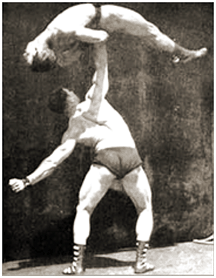In my search for my own optimal diet, I have stumbled across the idea of eating raw eggs.
Yes you heard me, raw eggs!
The health benefits from eating raw eggs are phenomenal, and much healthier than eating cooked eggs because cooking changes the chemical three dimensional shape of protein which can easily lead to allergies. They are also a great source of protein and fat, and are quite inexpensive compared to organic meet or fish.
Another great thing about eating raw eggs is, that you don't have to cook the them and therefore a real time-saver! (Especially after training!)
Now, like myself, the first question people ask is: "Won't you get salmonella if you eat raw eggs?"
Salmonella is of course a serious infection, but not many people know the risk of getting it.
The U.S. Department of Agriculture earlier this year published an analysis on this subject http://www.ncbi.nlm.nih.gov/pubmed/12022671?dopt=Abstract showed that only one of every
30,000 eggs are contaminated with salmonella. This shows that the risk is actually quite low, and the experiment was made with conventionally farmed eggs too, which means that if one eats organic eggs the risk virtually disappears.
I personally eat two raw organic eggs every morning, and then some more after training if necessary. I do also take my precautions and always carefully analyze the egg before consuming it. This is the guidelines given by Dr. Mercola on www.mercola.com
Guidelines To Ensure That You Are Consuming Fresh High- Quality Eggs
- Always check the freshness of the egg right before you consume the yolk.
- If you are uncertain about the freshness of an egg, don't eat it. This is one of the best safeguards against salmonella infection.
- If there is a crack in the shell, don't eat it. You can easily check for this by immersing the egg in a pan of cool, salted water. If the egg emits a tiny stream of bubbles, don't consume it as the shell is porous/contains a hole.
- If you are getting your eggs fresh from a farmer it is best to not refrigerate them. This is the way most of the world stores their eggs; they do not refrigerate them. To properly judge the freshness of an egg, its contents need to be at room temperature. Eggs that are stored in the fridge and opened immediately after taking them out will seem fresher than they actually are. Eggs that you want to check the freshness of should be kept outside the fridge for at least an hour prior to opening them.
- First, check all the eggs by rolling them across a flat surface. Only consume them if they roll wobbly.
- Open the egg. If the egg white is watery instead of gel-like, don't consume the egg. If the egg yolk is not convex and firm, don't consume the egg. If the egg yolk easily bursts, don't consume the egg.
- After opening the egg you can put it up to your nose and smell it. If it smells foul you will certainly not want to consume it.
DON'T eat a whole raw egg if you have never done it before. Start out small with about a half teaspoon of egg yolk the first 3 days, and then gradually increase it.
Raw egg is THE SHIT!!! :)
Sources:
http://articles.mercola.com/sites/articles/archive/2002/11/13/eggs-part-two.aspx
http://www.ncbi.nlm.nih.gov/pubmed/12022671?dopt=Abstract
Nutrition an physical degeneration by Weston A. Price






